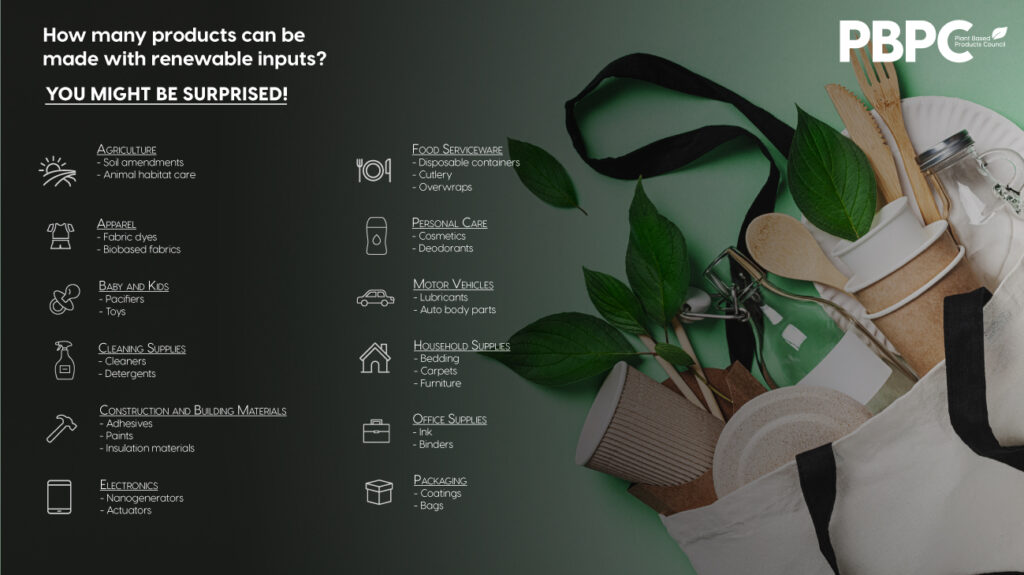What kind of plants are used to make plant based products?

A wide variety of renewable, sustainable inputs such as algae, bamboo, cassava, corn, hemp, mushrooms, potatoes, rice husk, soy, sugar beet, sugarcane, agricultural residues, and non-edible biomass like grasses, shrubs, and trees can be used to make plant-based products ranging from furniture to cleaning supplies and plastic to textiles.

Are all plant based products 100% biobased?
No, but for many products there is a way to understand how much of the product is in fact biobased. There are more than 3,500 products certified to display the USDA Certified Biobased Product label under USDA’s BioPreferred Program that are available to consumers. The products have been tested and certified to determine their biobased carbon content through standard test methods such as ASTM D6866 and display a label that specifies the percentage like the example below. In addition, the BioPreferred Program maintains a catalog of more than 16,000 biobased products that meet minimum biobased content requirements. Through constant innovation and technological advances, the percent biobased content of many products is increasing.
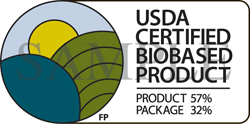
How are plant based products made?
Plant-based products are manufactured using a variety of techniques using plants in their manufacture as opposed to non-renewable inputs. The plant-based input is broken down into basic chemical building blocks and then converted into useful chemicals, products, or materials using biological, thermal, and chemical processes.
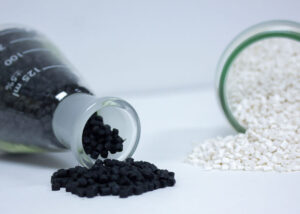 For example, bio-based plastic pellets are created by subjecting biomass like agricultural crops to cutting-edge chemistry, and those pellets are fed into plastics manufacturing equipment to be molded, extruded, or blown into the products that we use every day, indistinguishable from their fossil fuel-based counterparts.
For example, bio-based plastic pellets are created by subjecting biomass like agricultural crops to cutting-edge chemistry, and those pellets are fed into plastics manufacturing equipment to be molded, extruded, or blown into the products that we use every day, indistinguishable from their fossil fuel-based counterparts.
Find more examples from PBPC members in our Plant-Based Leaders blog series.
What kind of plant based products are on the market?
Scores of durable products are made from plant-based materials including automobile parts, building materials, furniture, lawn & garden products, children’s toys, and cell phone cases.
Many single-use, disposable, and packaging products are plant-based today such as food service ware, films, and bubble wrap, to name a few.
In addition, many ingredients, chemicals, and materials used in cleaning products, personal care products, diapers, and lubricants can be made from a plant based input.
We have an extensive list of Product Examples or you can find specific products in USDA’s BioPreferred® Program Catalog.
How do plant based products help the economy?
Plant-based products play a vital role in driving economic growth and innovation, especially in rural communities. Their production supports job creation across sectors such as agriculture, manufacturing, and research while stimulating rural development by providing new opportunities for farmers and local industries.
How do plant based products perform compared to traditional products and materials?
 It’s a common misunderstanding that plant-based products don’t perform as well as their conventional counterparts. The truth is that many plant-based products are chemically identical to traditional ones in use, and others provide improved or unique functionality.
It’s a common misunderstanding that plant-based products don’t perform as well as their conventional counterparts. The truth is that many plant-based products are chemically identical to traditional ones in use, and others provide improved or unique functionality.
For example, bio-polyester performs identically to traditional polyester because it is chemically identical, all while leading to a greater than 50% decrease in greenhouse gas footprint.
Further, some plant based products are preferred for their superior performance. Some auto manufacturers are using hemp fibers to make car parts because it is stronger than steel.
More than half of all traditional plastic resins used in packaging could be replaced by drop-in plant-based alternatives – meaning huge opportunity exists to start creating change.
Are plant based products all biodegradable?
No. Some plant-based products are compostable, some are biodegradable, and some are recyclable.
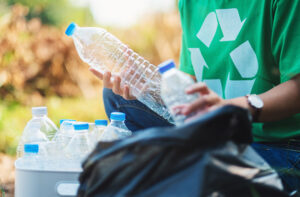 Plant based equivalents to traditional plastic resins, like bio-PET and bio-PE are molecularly identical to the traditional, fossil fuel-based form, so they can be recycled in the same way.
Plant based equivalents to traditional plastic resins, like bio-PET and bio-PE are molecularly identical to the traditional, fossil fuel-based form, so they can be recycled in the same way.
Take a look at our blog posts about biodegradable to learn more about this more unique end-of-life path.
What is the difference between biodegradable and compostable plant based material?
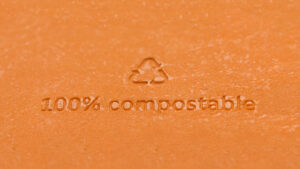 A biodegradable plant-based product is designed to degrade as a result of specific environmental conditions depending on the product and the action of microorganisms in that particular environment..
A biodegradable plant-based product is designed to degrade as a result of specific environmental conditions depending on the product and the action of microorganisms in that particular environment..
A certified compostable plant-based product will break down within a certain timeframe and under the specific conditions created in an industrial composting facility.
Read our blog post What does “compostable” mean? Is it the same thing as “biodegradable”? to learn more.
How many jobs does the plant based industry create?

In the United States, the plant based products industry provides over 3.94 million jobs with an estimated annual average salary of $102,000. Importantly, the industry supports rural America by bringing well-paying jobs to small communities and contributes to quality-of-life improvements.
Read about the industry’s economic impact to learn more.
Where can I find more information about plant based products and the circular economy?
You can find more information on our website about the circular economy or take a look at our blog posts that cover the topic. We’ve also compiled a list of resources on circular bioeconomy, composting and recycling for kids.
The Ellen MacArthur Foundation has examples, videos and comprehensive information on the circular economy.
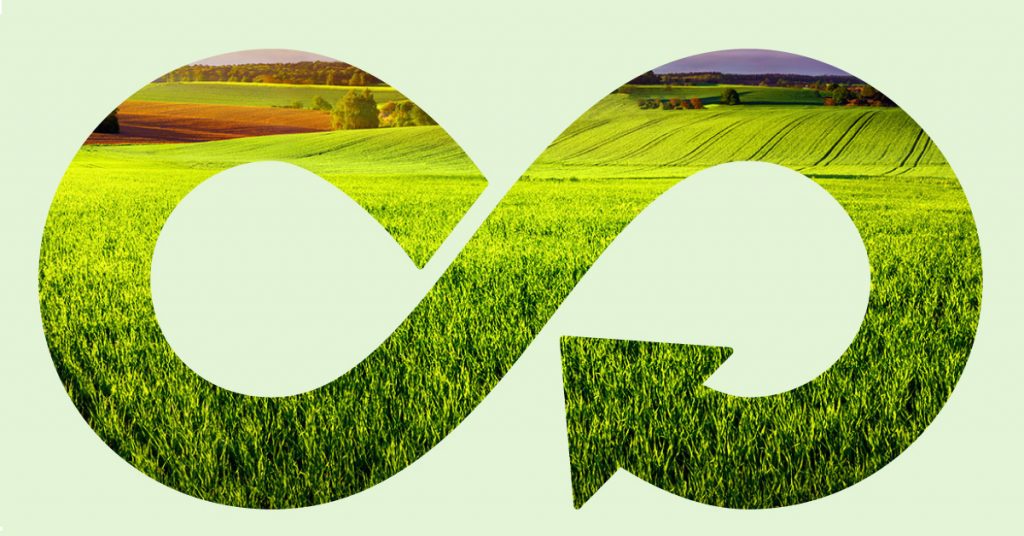
Interested in learning more about bioplastics? Take a look at our bioplastics FAQs.

